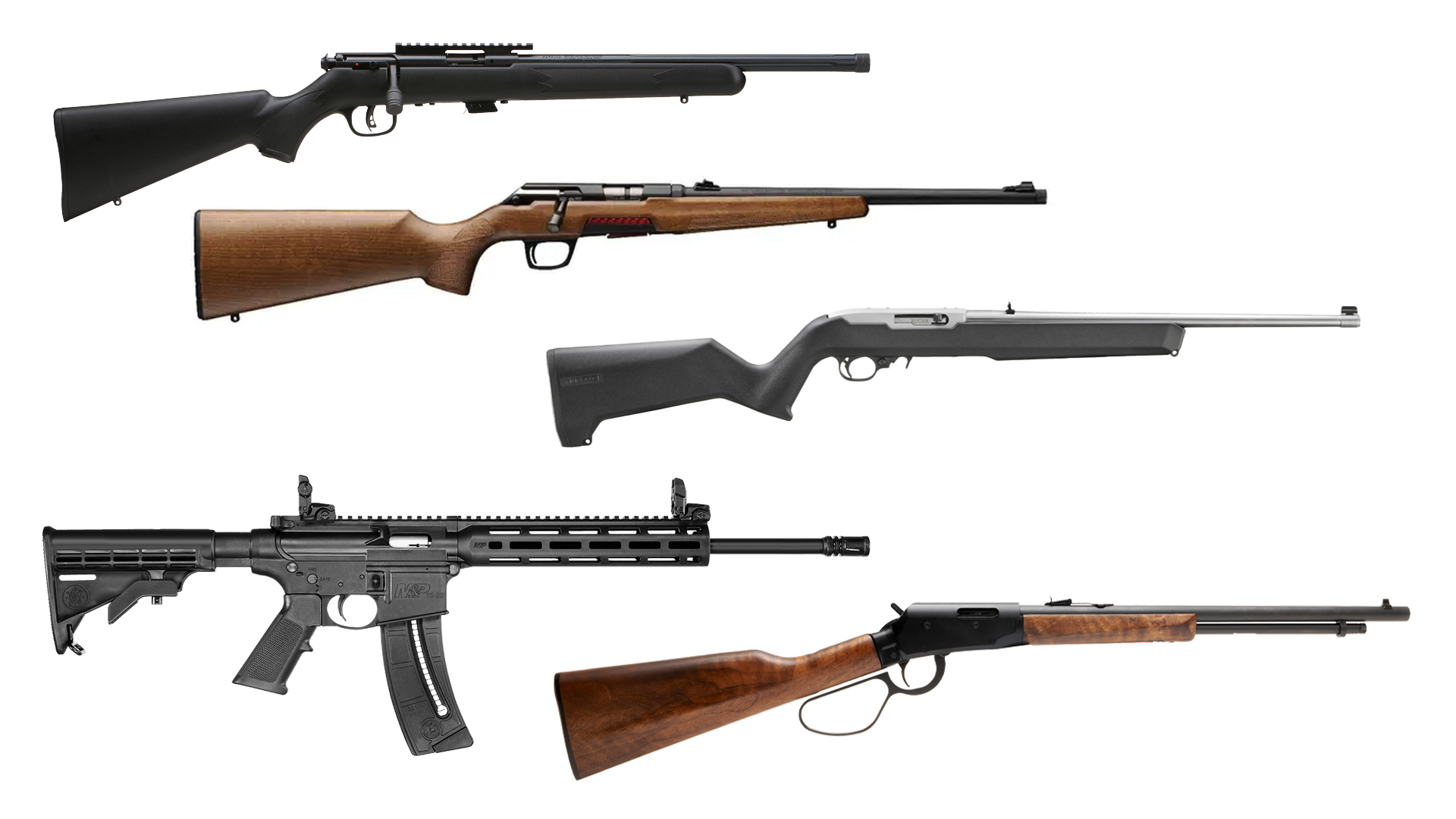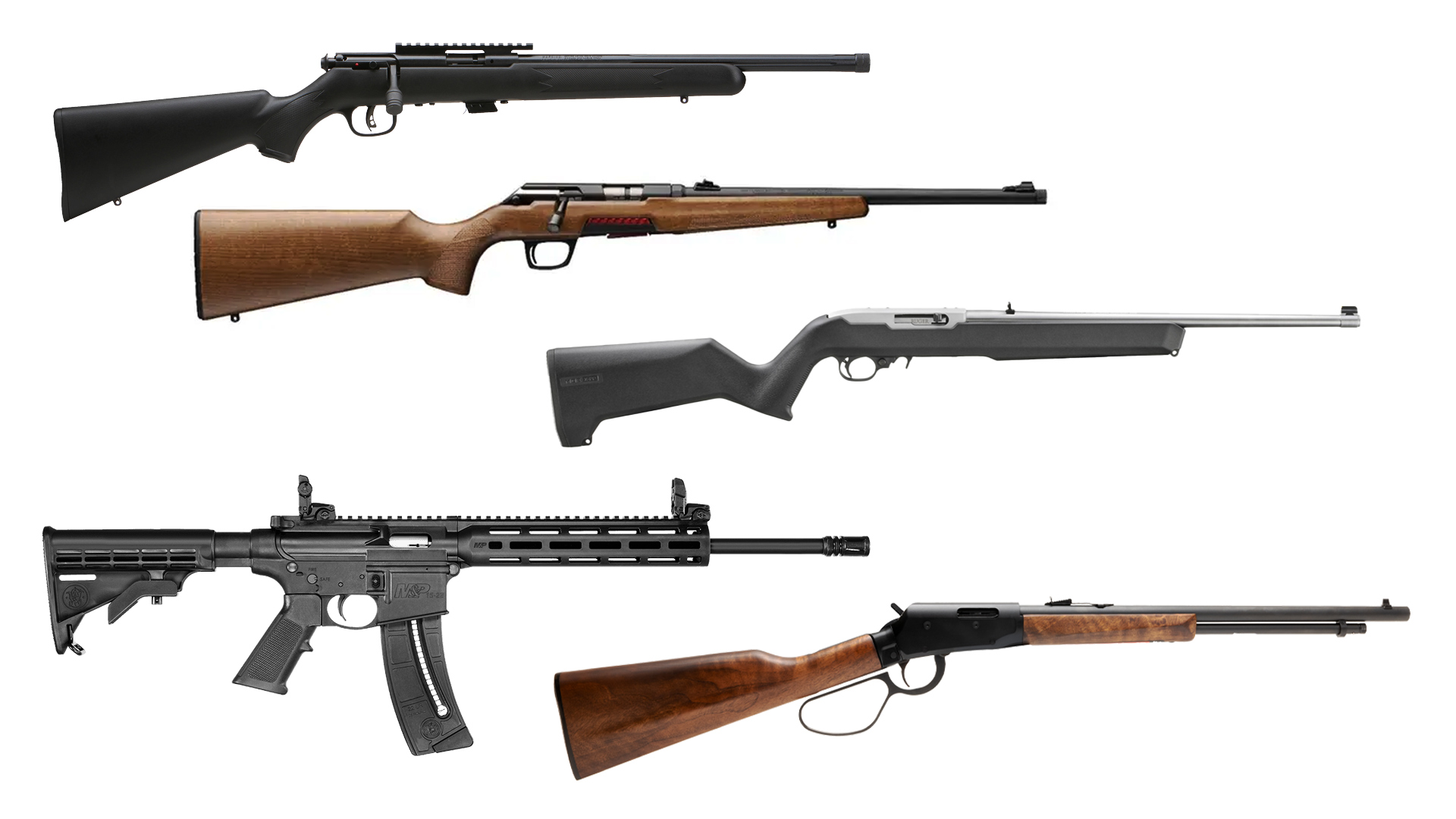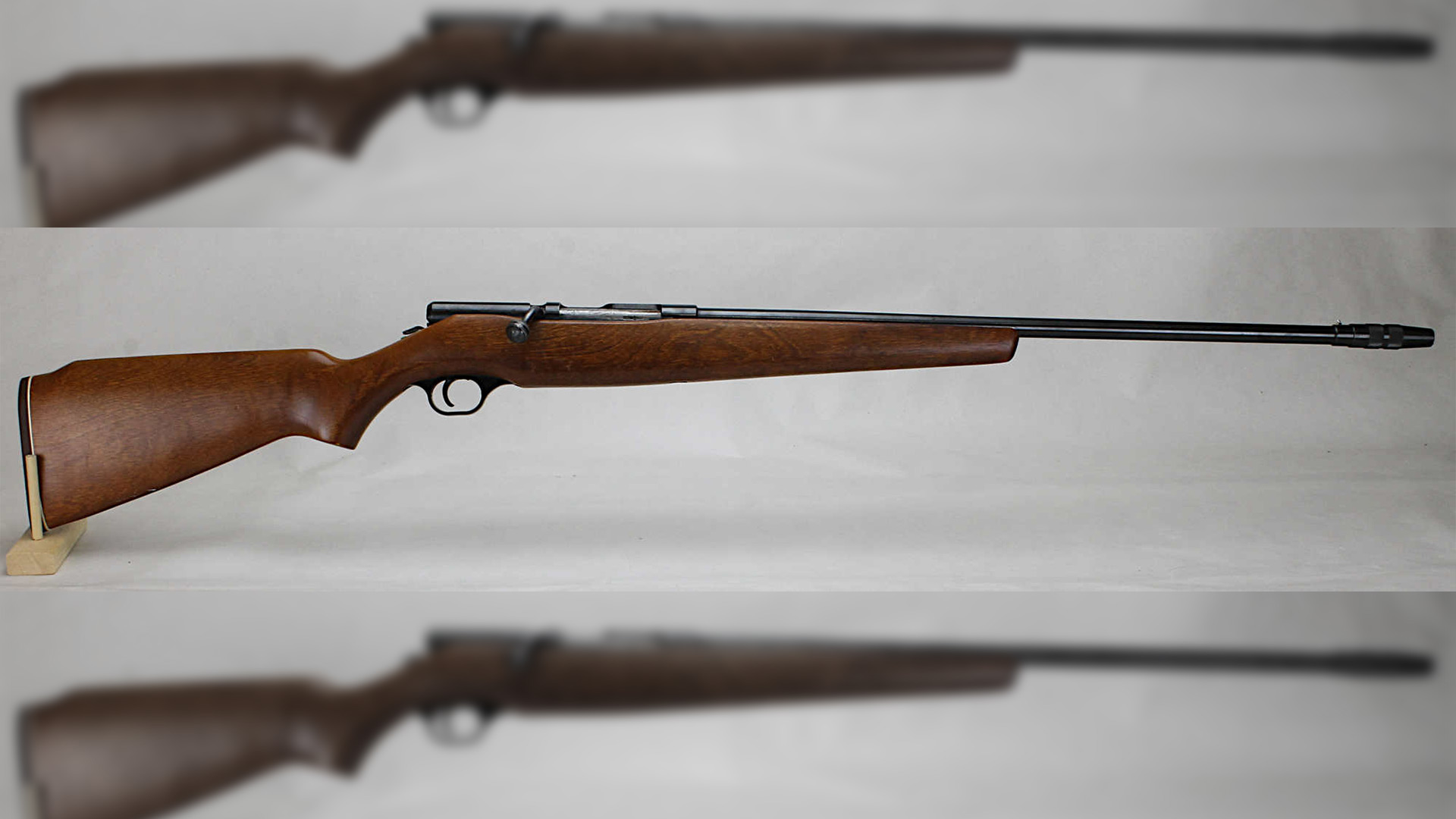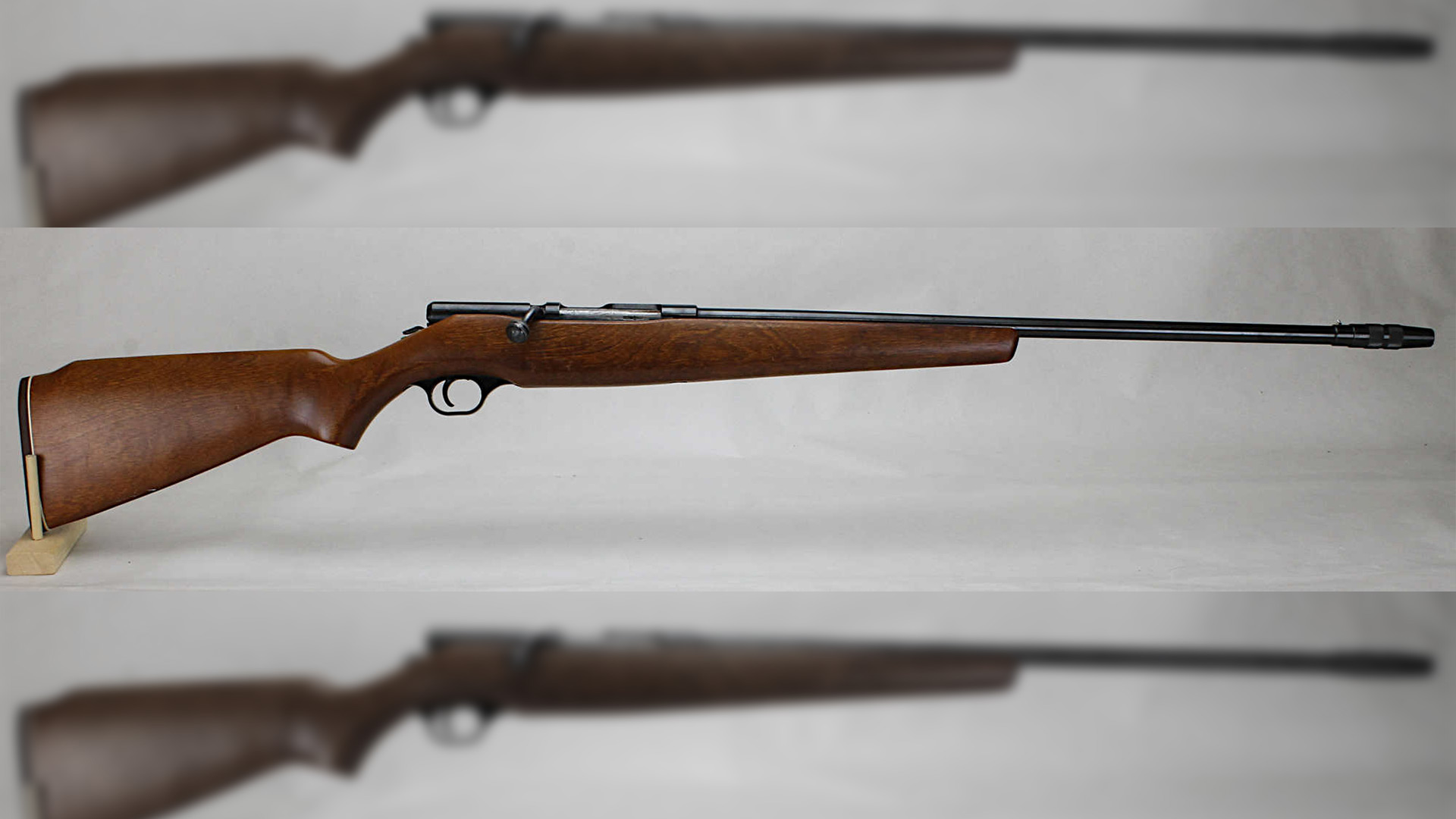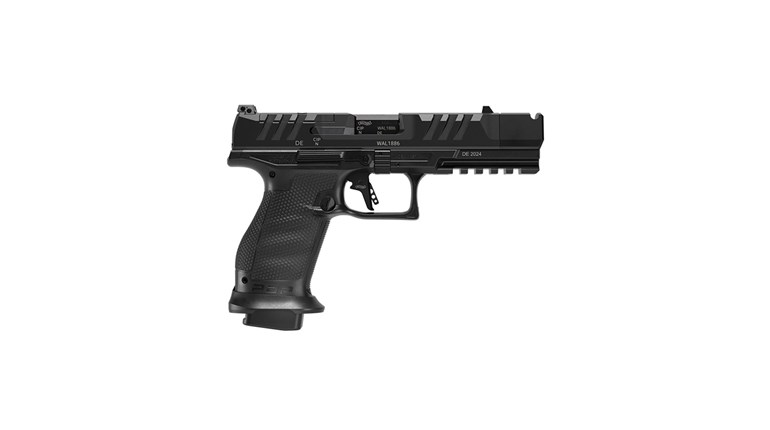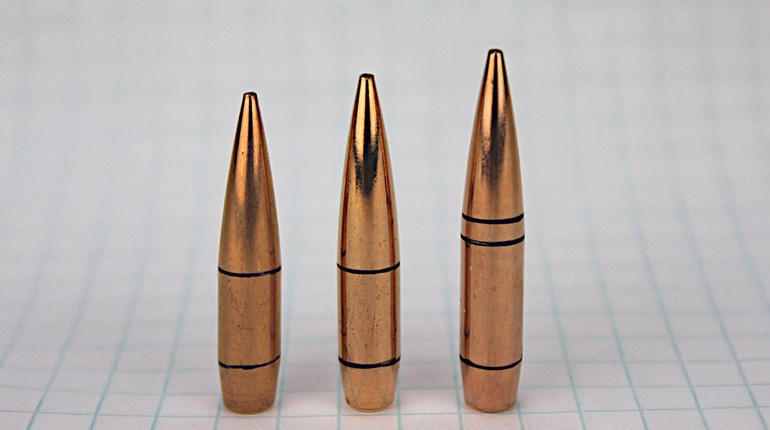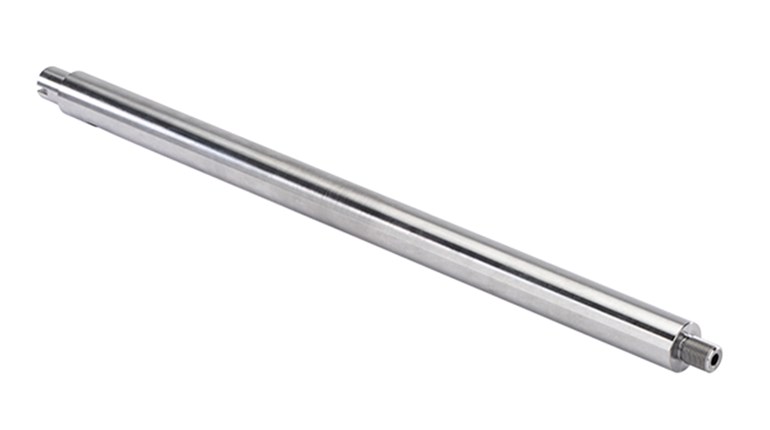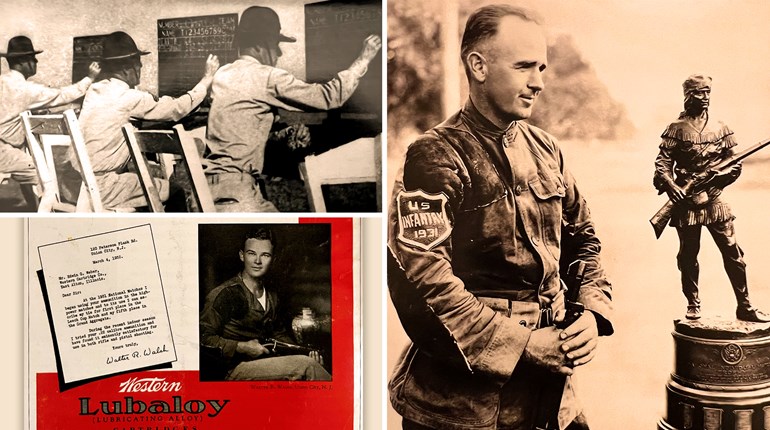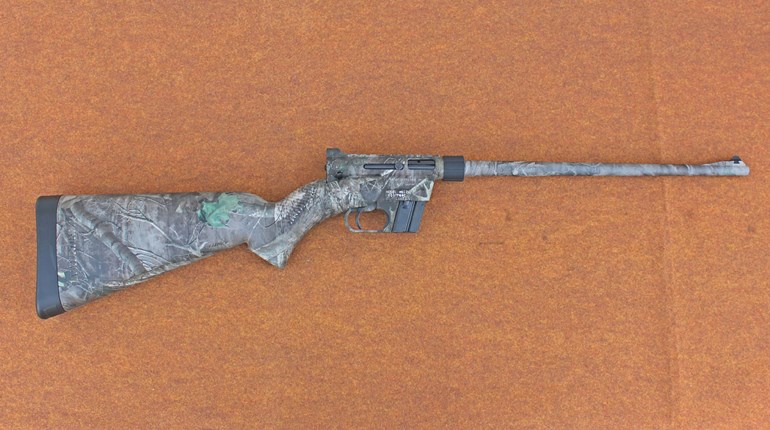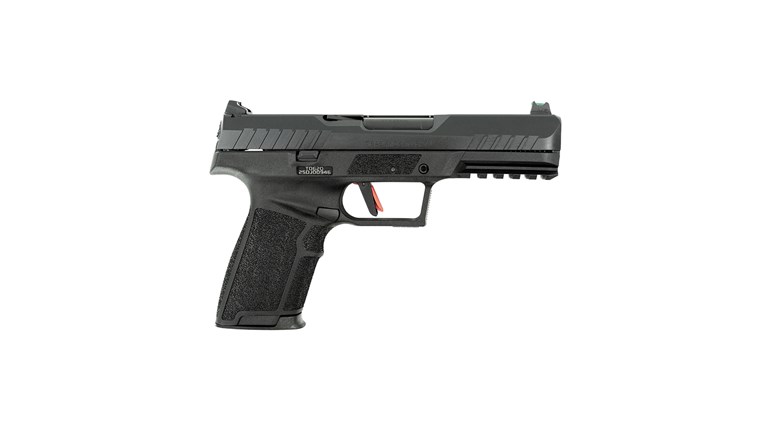
John Browning’s .45 ACP Model 1911 arguably remains the most popular semi-automatic pistol design among American shooters more than 100 years after its introduction. The most popular semi-automatic design concept, however, is undoubtedly the polymer-frame 9 mm Luger pistol—the “polymer nine.” Springfield Armory combines the two in a new compact, high capacity pistol of unusual configuration, the Prodigy Compact.
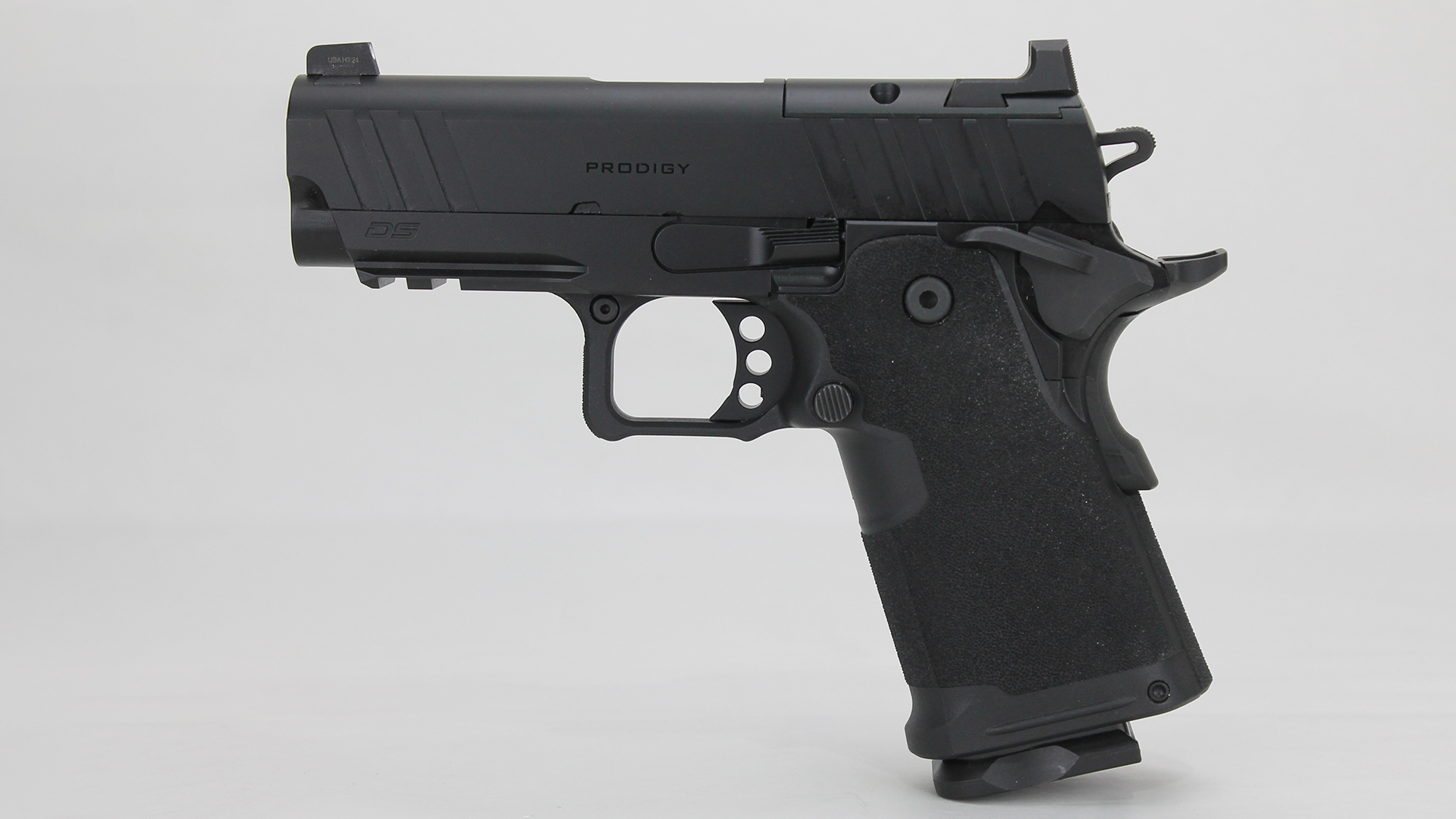
Springfield Armory melds early 20th and 21st century design technologies into its new Prodigy Compact, a serious-business 9 mm Luger combat pistol also appropriate for IDPA and similar action-pistol competition. Anyone familiar with the Model 1911 pistol will intuit its operation, while those who favor the high capacity polymer nine will find much to like, as well.
Springfield Armory’s Prodigy Compact features factory bells and whistles that were once the meat and potatoes of a vigorous custom Model 1911 cottage industry, including a skeletonized hammer and skeletonized trigger with overtravel adjustment, extended ambidextrous thumb safeties, beavertail grip safety with palm pad to ensure positive disengagement, front slide serrations to facilitate a chamber “press check,” lowered ejection port and a slightly beveled magazine well. The 3½-inch barrel incorporates a highly polished feed ramp for reliable feeding. Inserting a loaded magazine and viewing through the open ejection port, one can see the feed ramp extends a fraction of an inch below the cartridge bullet nose, a further aid to reliable feeding.
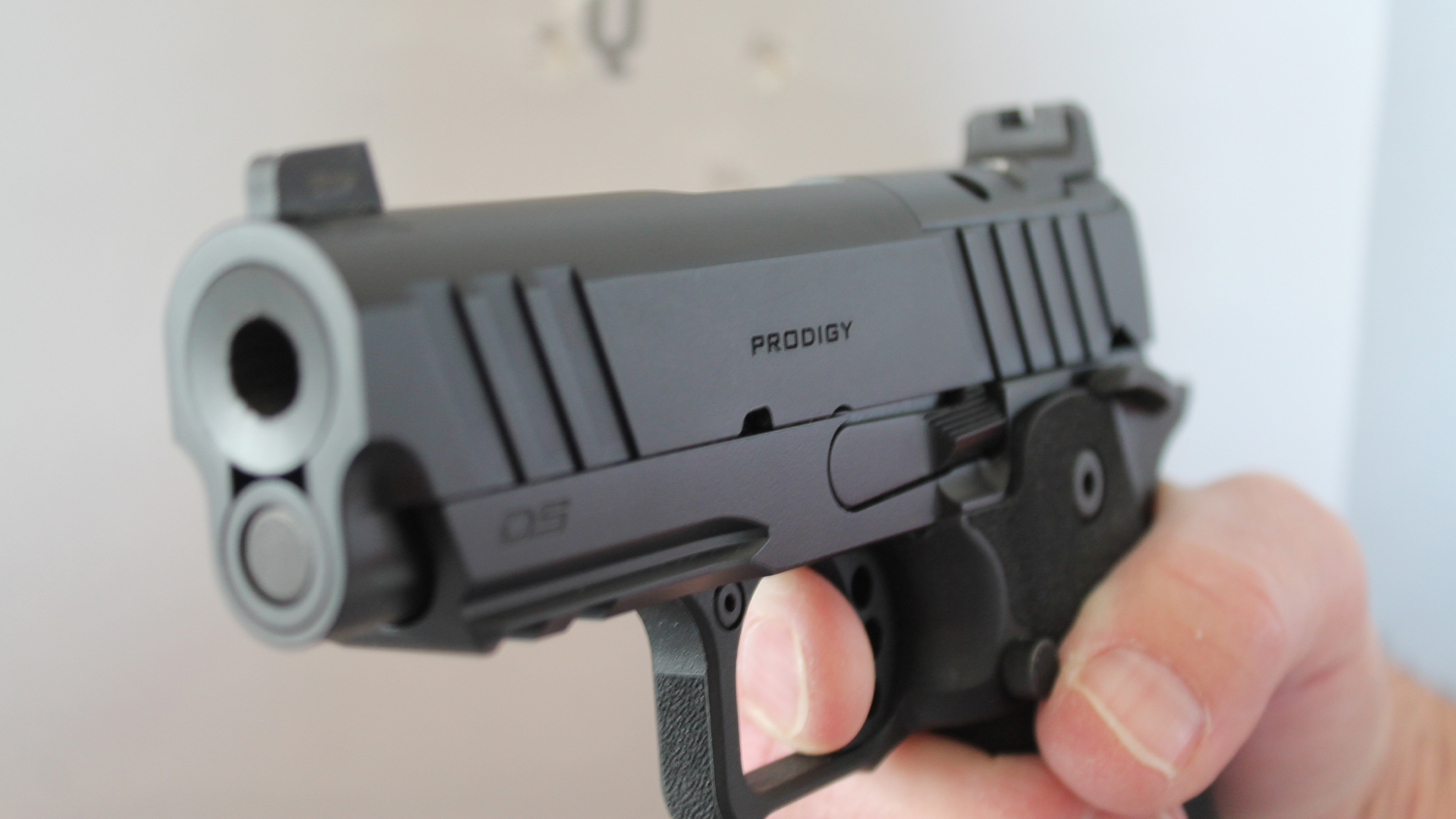
UNIQUE CONFIGURATION
Semi-automatic pistols universally are composed of two major subassemblies, the slide and the frame. Configuration of Springfield Armory’s DS series and the Prodigy Compact is unusual in comprising three major subassemblies—slide, frame and grip. Prodigy’s polymer grip is a separate assembly secured to a black Cerakoted aluminum alloy (7075-T6) frame with two escutcheon grip screws and a trigger guard screw. The arrangement differs somewhat from that of other polymer pistols, which feature a polymer frame with short metal inserts on which their steel slides ride. The Prodigy’s Cerakoted steel slide assembly rides directly on the hardened alloy frame that is, in turn, attached to the polymer grip assembly. The slide-to-frame fit is not what we might consider full-length as on a Model 1911, but like the polymer pistols, instead rides on four short rails. Yet the slide-to-frame fit is tight, in that there is absolutely no side-to-side play between the two, a wellknown enhancement to precision shooting.
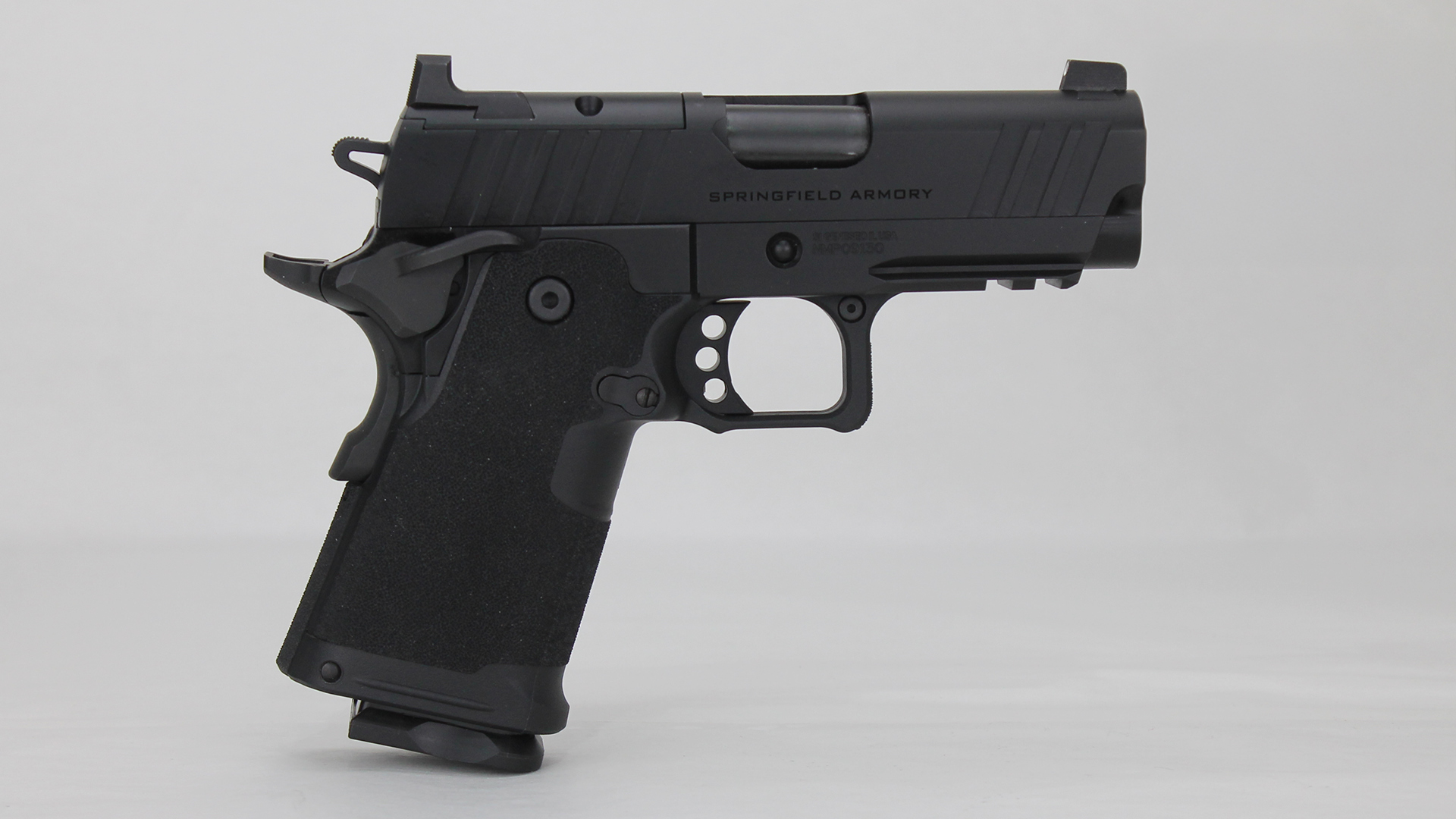
To access internal frame parts, the first step after field stripping is to remove the mainspring housing by driving out the housing’s retaining pin. Then turn out the grip’s two escutcheon screws on the right and left sides and the small retaining screw in the trigger guard to remove the grip assembly. From this point, disassembly is like that of the Model 1911, and reassembly is in reverse order. The grip screw escutcheons are directional, so note their orientation when removing the screws on disassembly. All that said, the fit of grip to frame is extraordinarily tight, requiring more force to separate the two than I was willing to apply to a borrowed pistol, so I was unable to examine the internal parts.
The barrel has a DLC (Diamond-Like Carbon) coating that improves durability, most significantly where the barrel lugs and muzzle contact the slide. It retains John Browning’s Model 1911 locking lugs that engage mating recesses in the slide top, the barrel lugs disengaging to allow the barrel to tilt slightly downward during cycling. Also like the Model 1911, the slide release stop passes through the barrel link, keeping keep the entire slide assembly fastened to the frame.
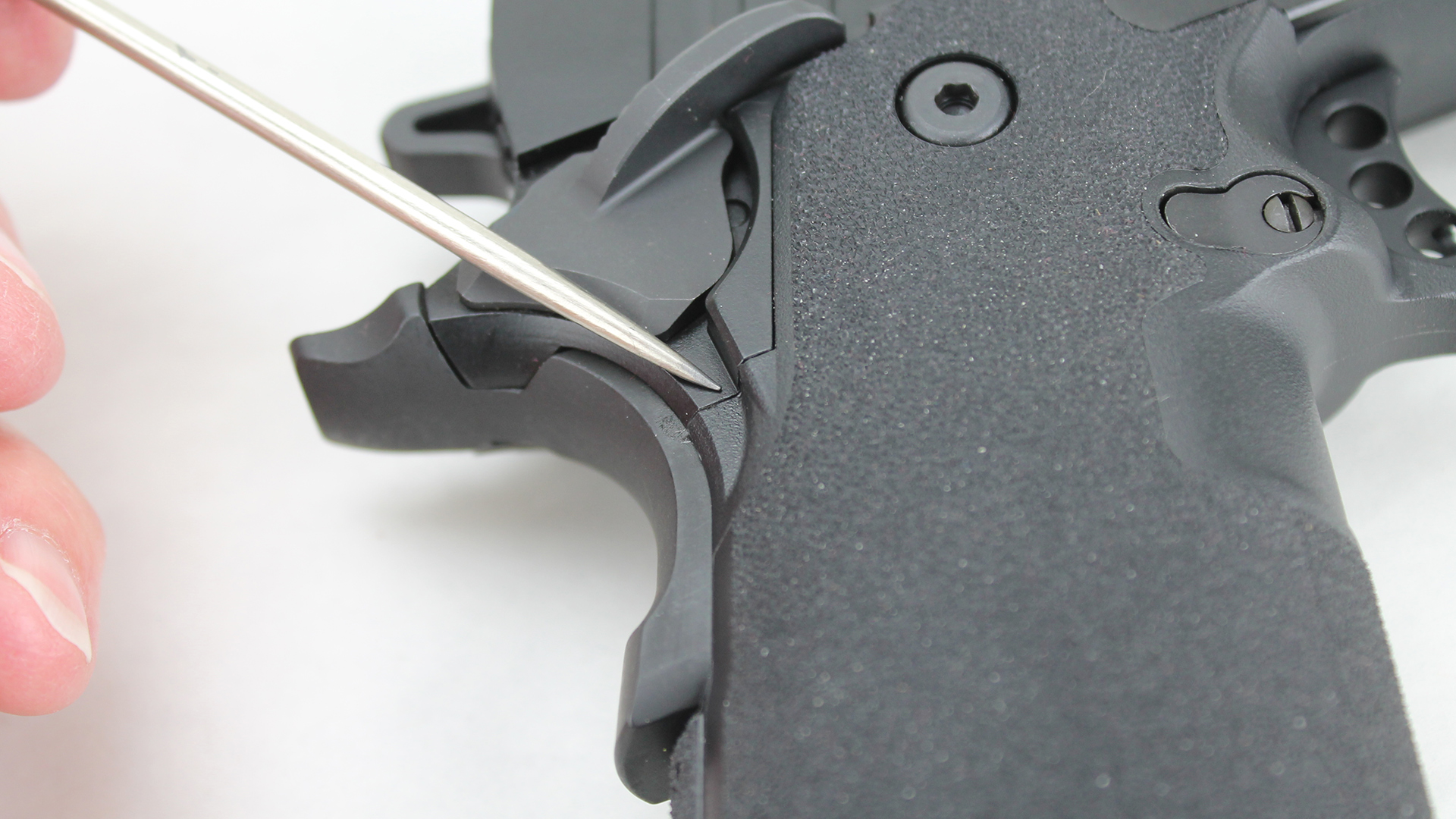
A non-skid type texturing—it feels about like 220-grit sandpaper—covers the sides and front of the gripping area except for where the middle finger of the shooting hand grasps just below the trigger guard. Here, the grip is smooth so that the non-skid does not impede the middle finger when drawing quickly from the holster. The back of the mainspring housing, too, features a non-skid texturing, as does the square front of the trigger guard. The rear of the trigger guard sweeps upward slightly so that it does not hammer the middle finger knuckle under recoil. Combined with a slight swell at the bottom front of the polymer grip, the Prodigy Compact’s grip is perhaps the most ergonomic among double-stack magazine pistols I’ve handled.
FOUR AOS PLATES
For mounting a laser or flashlight, Springfield Armory machined a two-slot Picatinny rail integral with the dust cover. Front and rear sights are of slightly exaggerated height to co-witness with red-dot optical sights that can be mounted on one of four provided AOS (Agency Optic System) adapter plates. The rear sight is drift adjustable for windage after loosening a set screw passing vertically through the sight’s dovetail. The sight is dovetailed into a removable “blank” plate that fits the contour of the slide top; turning out two Torx head screws permits removing the plate to install one of the AOS slide adapter plates to mount a choice of optical sights. The iron rear sights are integral to the adapter plates.
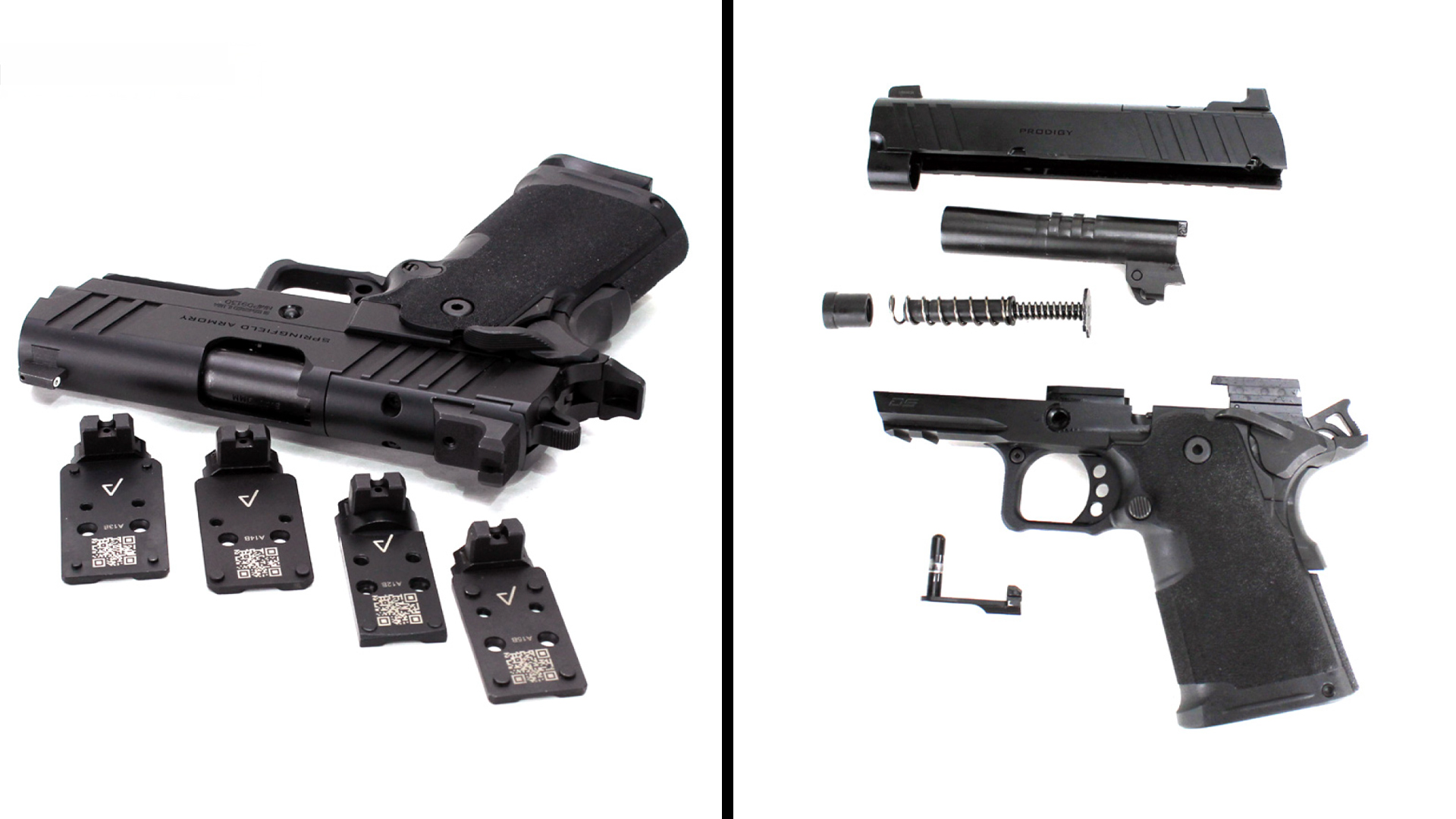
Springfield Armory recommends applying 25 inch-pounds of torque to the AOS adapter plate 6-48 Torx T-10 screws. If using a thread locker, use it sparingly, Springfield Armory advises, as too much can foul the pistol’s mechanism. QR codes appearing on the AOS plates take you to a helpful Springfield Armory website listing which plates fit which specific optics, and whether or not the optic manufacturer’s mounting screws will fit the Prodigy Compact.
SIMPLE FIELD STRIP
No owner’s manual came with the pistol, as it was not yet ready for publication during this late-2024 pre-release evaluation. Note that owners of Springfield Armory firearms may visit the Springfield Armory website to view various manuals. Field stripping instructions with photo illustrations are augmented with videos for other DS Series pistols, and those for the Prodigy Compact should be there by the time you read this. No “exploded view” schematic is provided.
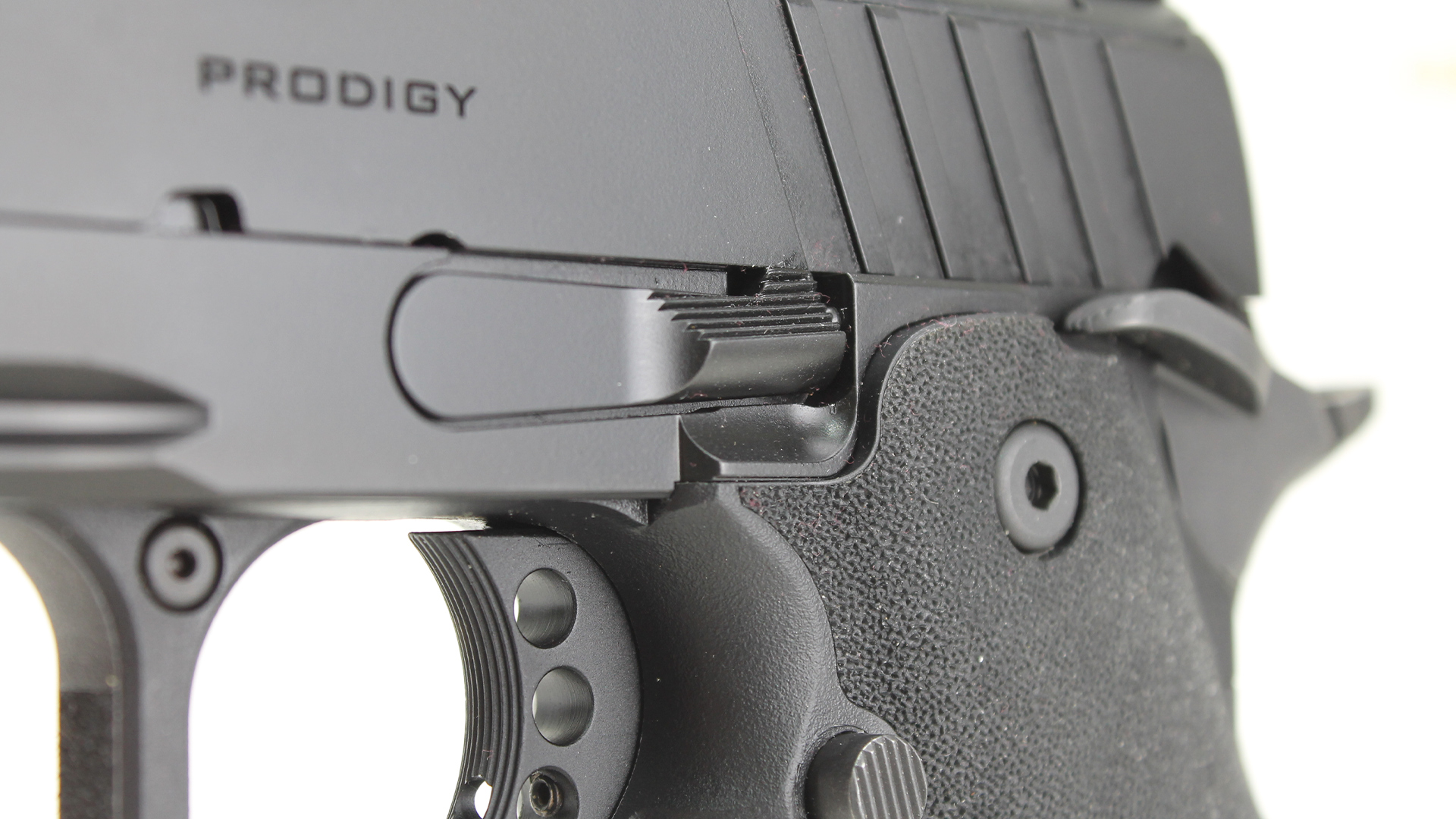
Because the Prodigy Compact features a captured recoil spring assembly and full-length guide rod with no barrel bushing, it does not field strip exactly like a standard Model 1911. Nor does it field strip quite like its DS Series sister pistols. The 4¼-inch and five-inch barreled DS variants have two-piece guide rods that unscrew from the muzzle end of the gun with a hex wrench. No wrench is needed with the Prodigy Compact; indeed, it ranks among the simplest and most intuitive of pistols to field strip. To remove the Prodigy’s slide, simply align the slide’s takedown notch with the slide release as on a standard Model 1911, then while maintaining control of the slide as it’s under pressure from the recoil spring, push the slide release out from right to left and ease the slide/barrel/recoil spring off the front of the frame as a single assembly.
Removing the recoil spring assembly from the slide takes some finesse to avoid bending the guide rod. Once accomplished, the bushing that mates the spring assembly to the slide can be removed, allowing the barrel to pass forward out the front of the slide.
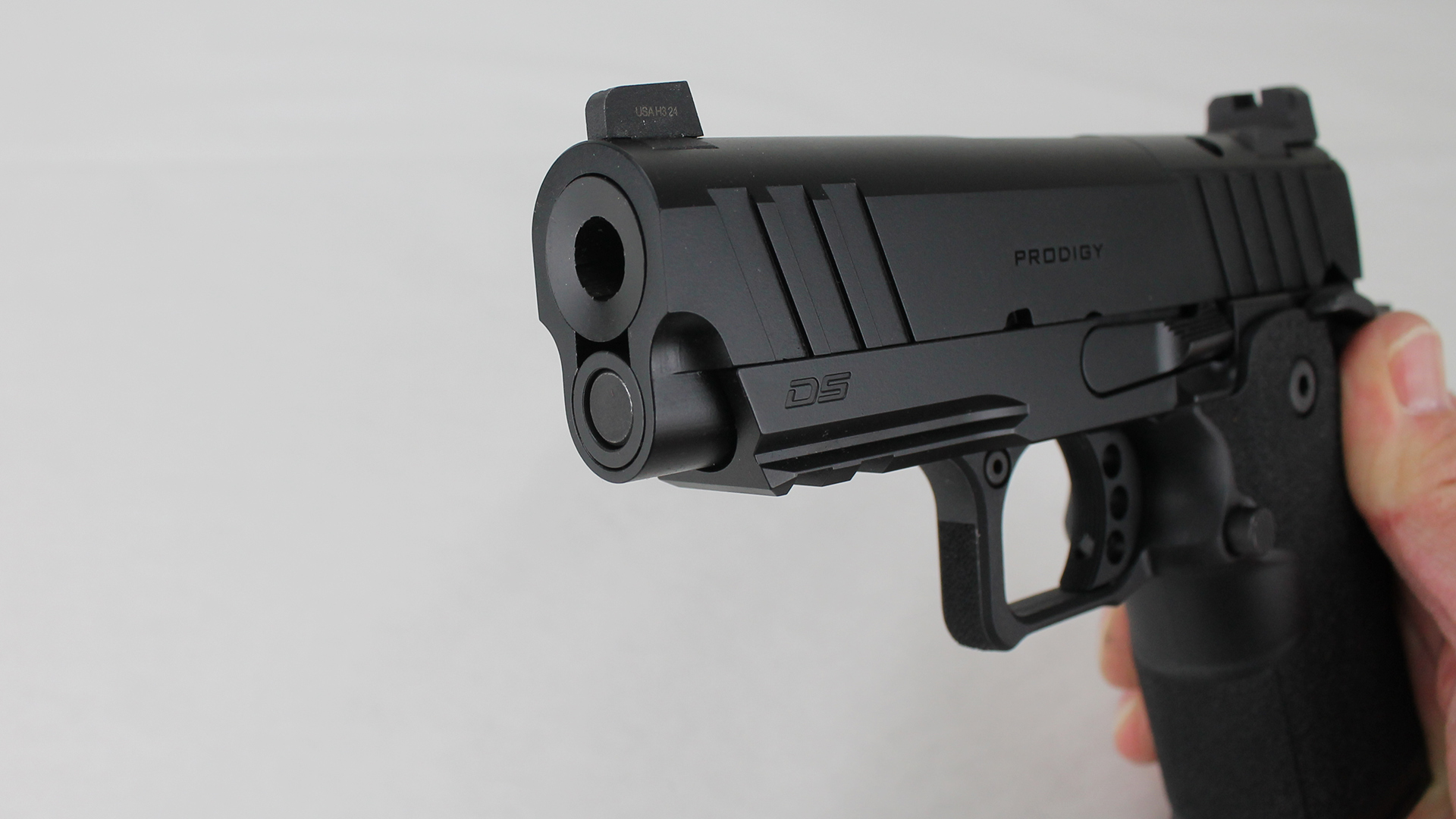
Two 15-round double-stack magazines accompanied the pistol. The base plates are easily removable for cleaning by simply depressing the button on the bottom and sliding the base plate off. Magazine base plates do not seat flush with the bottom of the grip; as with most polymer frame pistols, the bases protrude below the grip about 3/8 inch. The base plate edges are scalloped on each side to allow thumb-and-finger grasping for withdrawal, if needed, though during range tests here both magazines ejected positively and completely even when empty, an absolute requirement for pistols intended for combat or competition.
WELL-BEHAVED RAPID FIRE
Trigger pull weight of the Prodigy Compact is a consistent 4½ to 4¾ pounds, light enough for accurate competition shooting without being too light for a safe, single-action “cocked and locked” carry gun. My personal procedure for first-time firing of any semi-automatic firearm is to load one round in the magazine and fire it to assure proper feeding and semi-auto action. Then I load two rounds and fire those, then repeat with three rounds. If a semi-auto firearm is going to malfunction and go full auto, then it’s better that it does so with only two or three rounds rather than with a full magazine. It’s happened to others before—sometimes with tragic results—and can happen again; caution costs nothing, and testing a new firearm is no time to be in a hurry or to take shortcuts. After functioning flawlessly with magazines partially loaded and then fully loaded with 115-grain, 124-grain and 147-grain bullet factory cartridges, accuracy testing came next.
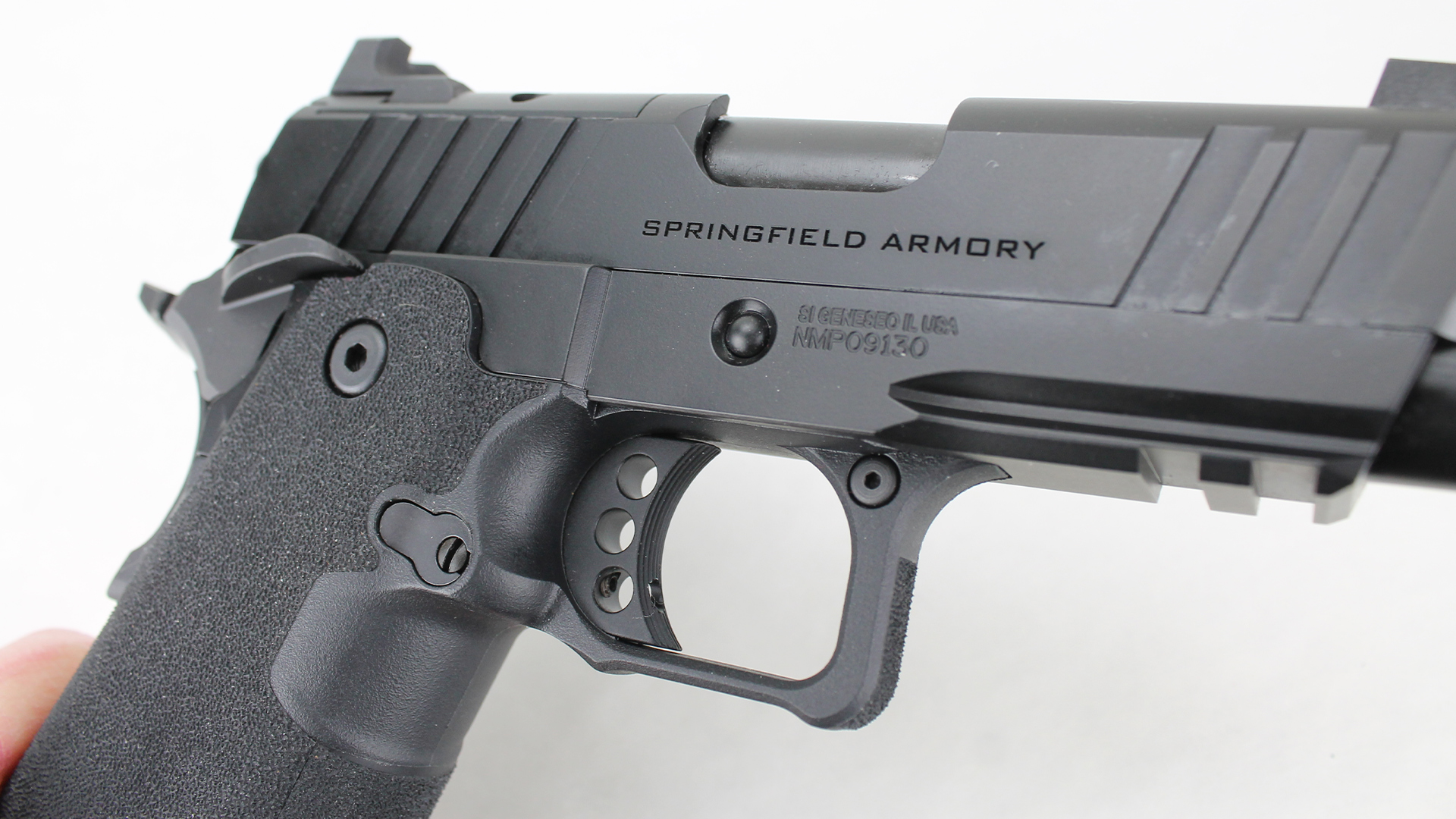
Because this is a compact combat pistol, accuracy testing from the bench at 15 yards is reasonable and realistic. Results with factory ammunition appear in the accompanying table. Shooting double-tap and failsafe drills, the Springfield Armory Prodigy Compact behaves well in rapid fire; recoil even with heavyweight 147-grain Federal Gold Medal Action Pistol ammunition is easily manageable despite the abbreviated barrel length.
ACCURACY TABLE
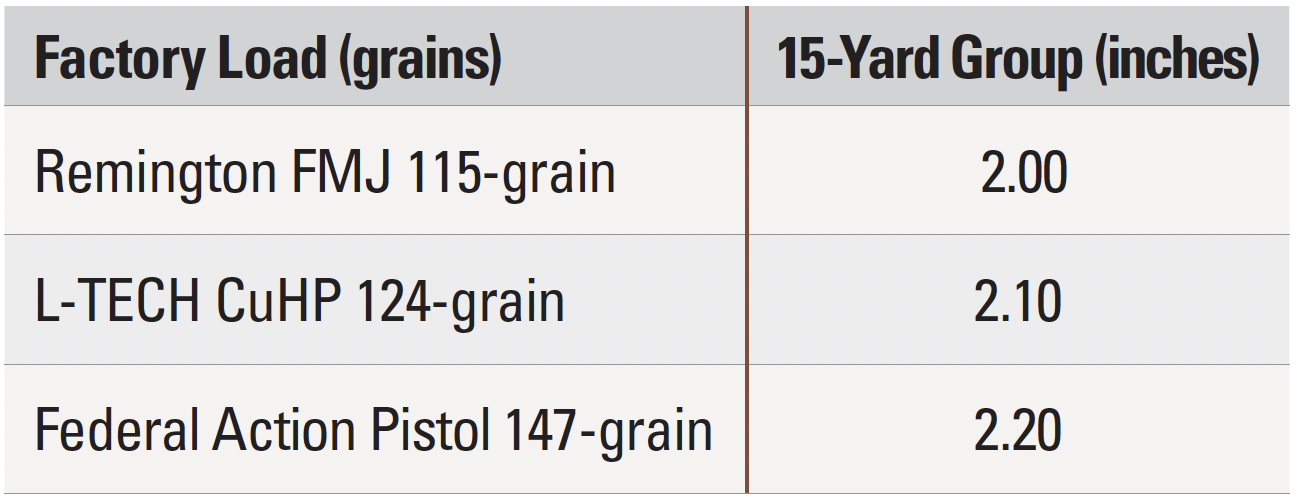
Quite a few manufacturers have offered pistols combining the differing design elements of the Model 1911 and the polymer nines; often, the basic intent is to retain the Model 1911’s robust design and redundant safeties, while taking advantage of the higher capacity magazine and lighter weight of the polymer nine. Springfield Armory’s Prodigy Compact is neither full-on Model 1911 or yet another polymer nine, instead possessing the best attributes of both in a unique design approach and reduced size.
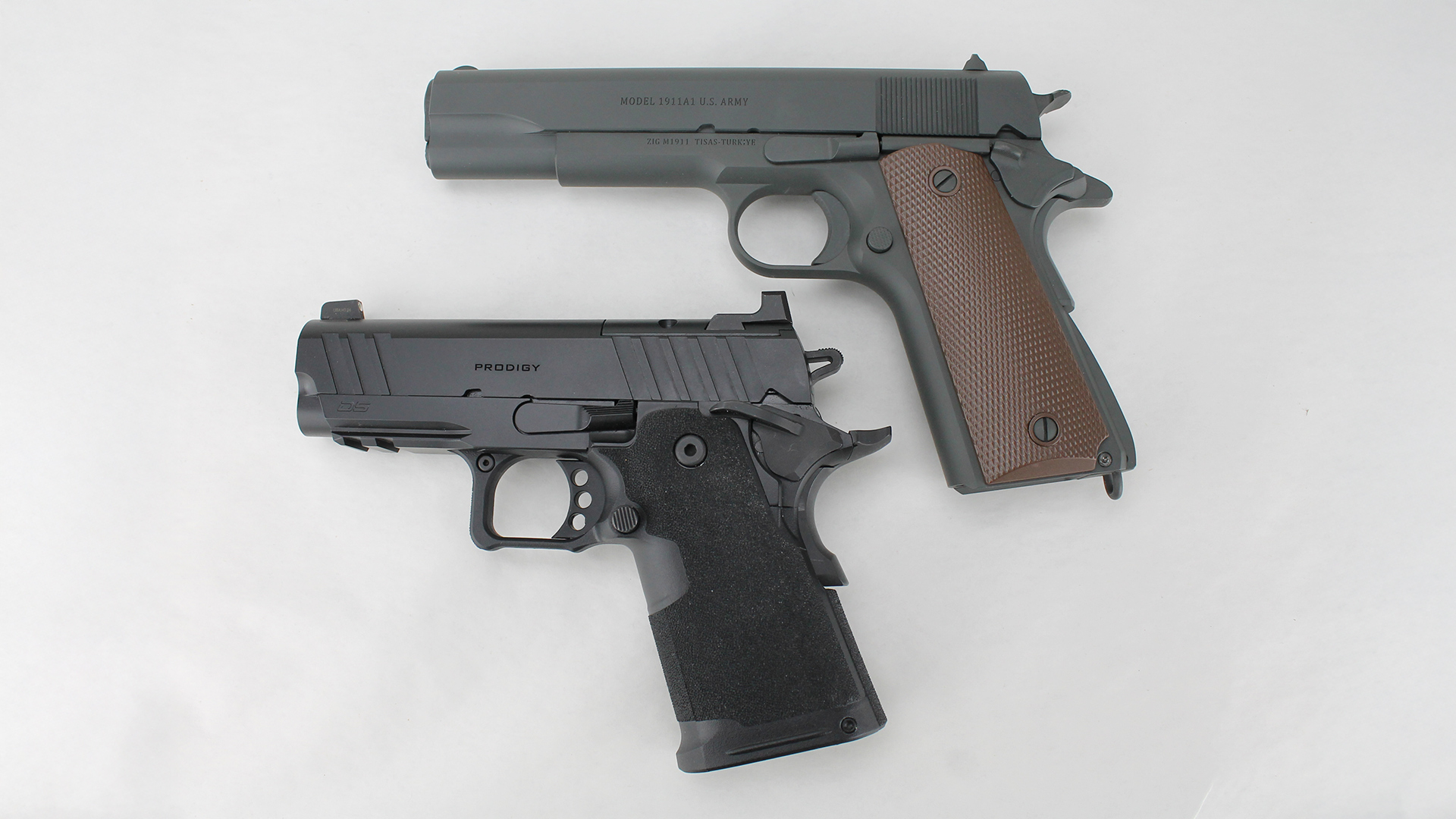
MSRP for the Prodigy Compact is expected to be about $1,549. There’s more information at the Springfield Armory website: springfield-armory.com.



